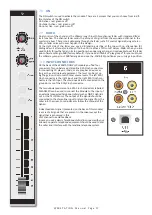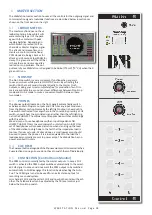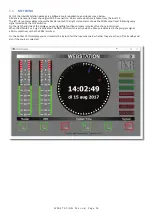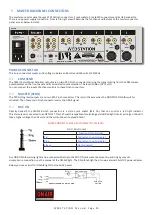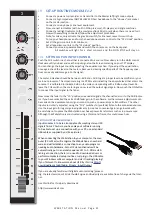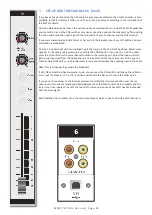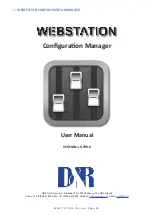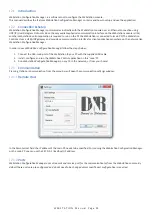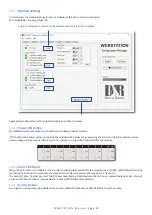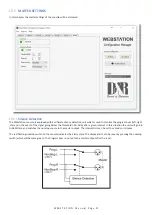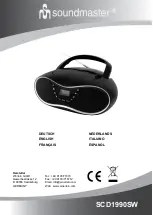
W E B S T A T I O N M a n u a l P a g e 12
5
MIC / LINE INPUT MODULES 1-2
The input modules switches & controls of the Webstationmixer have the following functions:
Each of Modules 1 and 2 have two selectable inputs. The two types of inputs consist of a Micro
-
phone input and a stereo line input. In the lower Mic switch position, the module is a normal
mono module. When the Mic is switched off (up position), you also have a stereo line level input
to feed the stereo PROGRAM buss, CUE buss and Voice Tracking buss.
5.1
GAIN
With the gain control (the first control knob below the modules number), the source input level
can be adjusted to the required internal mixer level. This control adjusts both the Mic input and
the stereo line inputs with the same control depending on the switch position.
5.2
STEREO LINE
The stereo line input is a high impedance input ( >10 kOhm) for connecting the stereo line level
outputs of devices such as CD players/MP3 players etc.
5.3
MIC
The Mic input has a balanced XLR input connector with 48 volt phantom powering for condenser
mikes.
The Mic-pre circuitry uses the latest technology studio-class components as used in high end
recording consoles. We use the That 1510 Mic-pre which is highly acclaimed for its low noise/dis
-
tortion and transparent audio. The low-noise design and excellent phase spec that D&R is known
for is integrated throughout the Webstation which results in a phase coherent signal path. Using
balanced microphones & cables allows for the quietest and high quality audio signals through
-
out your Webstation mixer. You can use standard balanced Mic cables available at any pro audio
dealer or music store. The Webstation uses chassis-mount female XLR type Mic input connectors.
Any standard pro audio Mic cable will fit into this female XLR connector.
5.4
EQUALIZER
Each module has a stereo two band equalizer to control the high and low frequencies individu
-
ally. The D&R designers used carefully chosen frequencies in the equalizer circuitry to enhance
the Mic input as well as the stereo line input.
5.5
CUE/COMMUNICATION BUSS
Below the LOW EQ potmeter is the stereo CUE switch (Pre Fade Listening).
This switch allows you to check the signal before you raise your channel fader up and mix
it with other signals in the mixer. Another smart function is that this CUE bus can be used
for communication. If you push a DJ’s Cue (let’s say channel one) and if you then push the
Telco(VoIP) Cue (located in the TELCO(VoIP) module) , the DJ as well as the caller can hear each
other outside the broadcast and even you, sitting behind the desk on the monitor speakers.
Note:
Levels need to
be carefully set to avoid feedback and overdrive of circuits.
The Cue switch
also sends out HID(Human Interface Device) signal over USB that can be programmed to do
specific functions in your play-out system.
5.6
ON
The ON switch is used to pass on the audio. The ON switch also sends out HID signal over USB that
can be programmed to do specific functions in your play-out system. In the Control section of the
manual we will explain how.
5.7
VOICE TRACK BUSS
The ON switch is ALSO used to route an input signal from module 1-2 to the Voice track buss.
Push the ON switch a little bit longer and the audio will be removed from the Program buss and as
-
signed to the Voice track buss, as a result the ON switch will blink. The Voice track signal Is routed
to USB-3 for further processing in your play-out system.
5.8
FADER
Final audio level control is the high quality, 100 mm long throw N-Alps channel fader that send out
a control voltage to the internal stereo VCA. The control voltage is also used to detect when the
fader is moved up and can send out a pulse for fader start purposes. This control voltage activates
the start circuitry that can be assigned to one of the two GPO connectors.
A software page (as already seen on the next page) will be shown further in this manual to cus
-
tomize the Webstation to your needs with instructions how to do that.

















